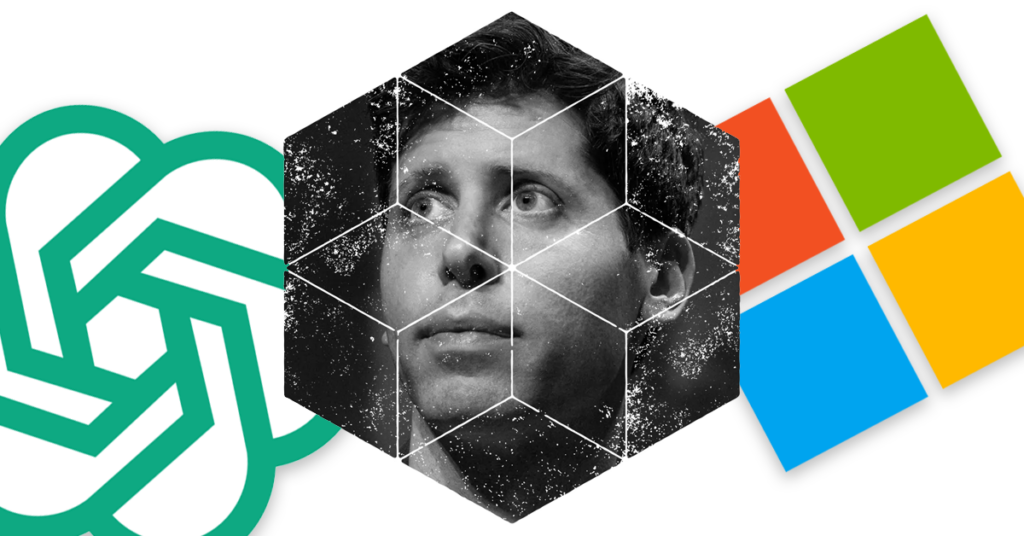The Sam Altman/OpenAI rollercoaster: Lessons from leadership turmoil

The CEO of one of the world’s most talked about tech companies has been sacked, employed elsewhere, and returned to OpenAI in less than a week.
While the precise details remain unclear surrounding the dismissal of Sam Altman, who steered the $90bn (£71.7bn) company behind ChatGPT, what can businesses learn from the rollercoaster that is playing out in real-time?
What happened?
On the back of the dismissal, an OpenAI blog post said Altman “was not consistently candid in his communications” with the board.
Laura Freebairn-Smith, author of Abundance Leaders believes “the seeds of this disruption might have been sown when the company was founded as a nonprofit.”
A nonprofit board overseeing a “rapidly growing, venture capital-funded for-profit entity” may have created a “dynamic tension between purpose and profit,” according to Freebairn-Smith. Regardless of the finer details, OpenAI’s ongoing saga offers lessons on how not to manage a leadership change.
While clear communication drives company growth, problems arise when investors and staff feel out of the loop. Freebairn-Smith goes on to advise if there are changes in-house, a “thought-out communication plan” is a must. Moving too swiftly, without adequate “digestion time” and “a step-by-step rollout plan,” leads to the kind of chaos we are reading about, she warns.
Powerful leadership has a “strong emphasis on transparency” and developing a “who needs to know what in what sequence?” plan will minimise problems, according to Freebairn-Smith. Whatever happens over the next few weeks, OpenAI is in a worse place now than it was and serves as a cautionary tale to other companies on the brink of organisational change.
Right person, right seat
To avoid similar mistakes businesses need to ensure the right people are in the right job.
Sam Altman “wasn’t incompetent,” according to Cliff Ettridge, Director at branding agency The Team, “but he might not have been a CEO. He was an inspirational leader. He was a leader in thinking when it came to AI. That should have been his role and the board missed this.” Ettridge references his workplace in the 1990s – The Body Shop – as a company that got it right.
Anita Roddick was the inspirational leader who drove the ethics, purpose, and invention of the company, but Ettridge points out that she wasn’t in charge of the day-to-day running of the business. That was someone else’s job. The board knew Anita’s strengths and allowed her to play the role she wanted, and The Body Shop needed.
“OpenAI missed the role that Sam Altman could play. Maybe he did too,” says Ettridge. For better business results, the right people must be in the right place.
Manage employee backlash
Over 700 ChatGPT employees have signed an open letter threatening to quit unless its board resign. The potential mass exodus of ChatGPT employees underscores the importance of stakeholder engagement in times of change.
When making changes in business, Martin Gutmann PhD, Professor at the Lucerne School of Business, and the author of The Unseen Leader offers advice, saying staff “don’t like to be surprised, especially not when it comes to major organisational changes.”
Acknowledging there are times when things must happen fast, Gutmann maintains that it is crucial to speak to key stakeholders before a major change becomes public: “If investors or key employees hear about a major change through the rumour mill or the newspapers first, they will at best be confused and at worst resentful,” he warns.
Being responsible to different people with varying needs and priorities is challenging. According to Gutmann, there is no magic formula for managing leadership changes correctly, but it helps to “build up credibility and good faith through a track record of integrity and empathy.”
Remain independent
For governance purposes, an autonomous Chair is a must, but David Pattison, Chairman and author of The Money Train notes the Chair was an executive in OpenAI and therefore “unlikely to have an independent view.”
He continues, “How can a non-profit holding company have a for-profit business sitting in it, with the board walking that tightrope of good governance and fair decision-making?
“It can’t…it’s a ridiculous structure.”
With further details still coming to light, it’s likely that some litigation from the shareholders will follow soon, according to Pattison. While smaller businesses won’t have such complex structures, having an organised line of command is universally advantageous. No matter what size the company, keep investors informed so they don’t hear news about your company on social media or second-hand.
Control change
Adding to the chaos, Microsoft, a $13bn (£10.3bn) investor in OpenAI, stood to gain and lose from this leadership transfer. The tech giant hired OpenAI co-founders Altman and Brockman to head up a new advanced AI research team, only for Altman to return to the Open AI. The abrupt leadership changes and overall turbulence highlight valuable lessons for businesses navigating organisational shifts.
Managing change in an SME is no small undertaking – but it’s one that (in contrast to big corporations like OpenAI) a business owner is likely to be doing on his or her own, with no experts, no dedicated departments, and no funds for outside consultants.
Transparent communication, strategic foresight and thoughtful execution are indispensable in steering organisations of any size through the complex currents of change.
Microsoft had not responded to a request for comment at the time of publication and OpenAI declined to comment.




